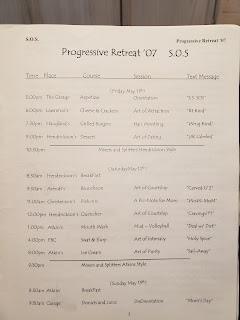Vestigial Organs
What is the deal with all these Useless Body Parts? So I don't need my tonsils, appendix, and pinky toe? Really they don't serve a purpose? Evolutionist would love us to think that, but the list of vestigial organs in humans has shrunk from 180 in 1890 to 0 in 1999. If that theory has been largely shot down in the world of Human Anatomy how much more in the field of zoology.
First, it is in principle not possible to prove that an organ is useless, because there is always the possiblity that a use may be discovered in the future. This has happened with over a hundred alleged useless vestigial organs which are now known to be essential.
Second, even if the alleged vestigial organ were no longer needed, it would prove devolution not evolution. The creation model allows for deterioration of a perfect creation. However the particles-to-people evolution model needs to find examples of nascent organs, i.e. those which are increasing in complexity.
Wings on birds that do not fly?
There are at least three possibilities as to why ostriches, emus, etc have wings:
a) They derived from smaller birds that once could fly. This is possible in the creationist model. Loss of features is relatively easy by natural processes; acquisition of new characters, requiring new DNA information, is impossible.
b) The wings have a function. Some possible functions, depending on the species of flightless bird, are: balance while running, cooling in hot weather, warmth in cold weather, protection of the rib-cage in falls, mating rituals, scaring predators (I’ve seen emus run at perceived enemies of their chicks, mouth open and wings flapping), sheltering of chicks, etc. If the wings are useless, why are the muscles functional that allow these birds to move their wings?
c) It is a result of ‘design economy’ by the Creator. Humans use this with automobiles, for example. All models might have mounting points for air conditioning, power steering, etc. although not all have them. Likewise, all models tend to use the same wiring harness, although not all features are necessarily implemented in any one model. In using the same embryological blueprint for all birds, all birds will have wings.
Pigs with two toes that do not reach the ground?
Does this mean that the shorter toes have no function? No one has demonstrated this. Pigs spend a lot of time in water / muddy conditions for cooling purposes. Perhaps the extra toes make it easier to walk in mud (a bit like the rider wheels sometimes seen on long trucks which only touch the road when the truck is heavily loaded). Or perhaps the muscles attached to the extra toes give strength to the ‘ankle’ of the pig.
Why do male humans have nipples?
This is answered in Bergman and Howe’s book “Vestigial Organs” are Fully Functional (below right). Males have nipples because of the common embryological plan followed during early embryo development. Embryos start out producing features common to male and female — again an example of ‘design economy’. Nipples are a part of this design economy. However, as Bergman and Howe point out, the claim that they are useless is debatable.What is the evolutionist’s explanation for male nipples? Did males evolve (devolve) from females? Or did ancestral males suckle the young? No evolutionist would propose this, so males nipples are not evidence for evolution or evidence against creation.
Why do rabbits have digestive systems that function ‘so poorly that they must eat their own feces’?
This is an incredible proposition. One of the most successful species on earth would have to be the rabbit! The rabbit’s mode of existence is obviously very efficient (what about the saying ‘they breed like rabbits’?). Just because eating feces may be abhorrent to humans, does not mean it is inefficient for the rabbit! Indeed rabbits have a special pouch called the cecum, containing bacteria, at the beginning of the large intestine. These bacteria aid digestion, just as bacteria in the rumen of cattle and sheep aid digestion. The rabbit produces two types of fecal pellet, a hard one and a special soft one coming from the cecum. It is only the latter which is eaten to enrich the diet with the nutrients produced by the bacteria in the cecum. In other words, this ability of rabbits is part of their design; it is not something they have learnt to do because they have ‘digestive systems which function so poorly’. It is part of the variety of design which speaks of creation, not evolution.Legless lizards
It is quite likely that the legless lizards, etc. could have derived from the original created kind, and so the structures would be consistent with this. ‘Loss’ of a structure is of no comfort to evolutionists as they have to find a mechanism for creating new structures, not losing them, and there is no such mechanism to explain how evolution from ‘amoeba to man’ could occur. Genesis 3:14 suggests that snakes maybe once had legs. Brown (CRSQ 26:54) suggests that monitor lizards may have been the precursors of snakes.Adaptation and natural selection are a biological fact; evolution is not. Natural selection can only work on the genetic information present in a population of organisms—it cannot create new information. For example, if reptiles have no genes for feathers, no amount of selection will produce a feathered reptile. Mutations in genes can only modify or eliminate existing structures, but not create new ones. If in a certain environment a lizard survives better with smaller legs, or no legs, then varieties with this trait will be selected for. This might be more accurately called devolution, not evolution.
The Appendix
It is known that the appendix contains lymphatic tissue and has a role in controlling bacteria entering the intestines. It functions in a similar way to the tonsils at the other end of the alimentary canal, which are known to increase resistance to throat infections, although once also thought to be useless organs.Hip bones in whales
These bones are alleged to show that whales evolved from land animals. However, Bergman and Howe point out that they are different in the male and female whales. They are not useless at all, but help penis erection in the males and vaginal contraction in the females. Also it is well known that the tail motion is quite different in sea mammals compared to most fish - mammals such as whales motion their tales up and down where as fish sway side to side, giving additional purposes to a whales hip.




































































































































































